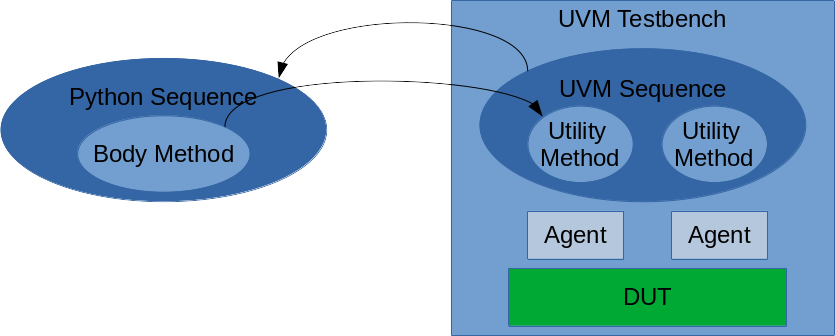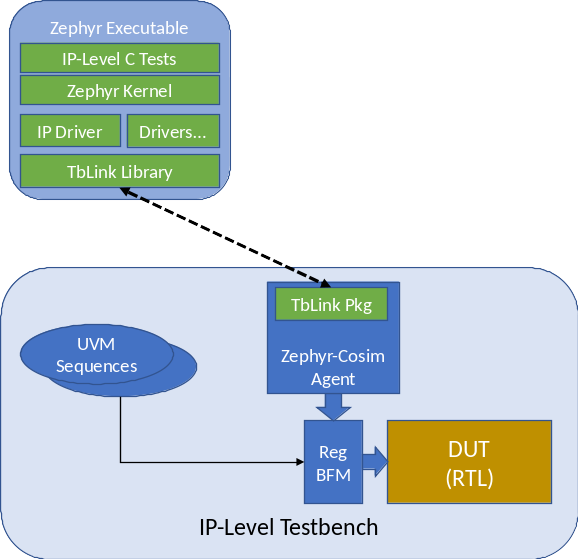TbLink RPC A flexible co-simulation framework
TbLink-RPC
Functional verification testbench environments benefit from making use of code written in a variety of languages and integrated in a variety of ways. For example, it’s common to incorporate reference models written in C/C++ into a SystemVerilog UVM testbench for use by the scoreboard. It’s often desirable to incorporate test content written in a language such as Python in order to leverage the expertise of domain experts that aren’t experts in SystemVerilog or UVM.
Integrating non-SystemVerilog code into a SystemVerilog environment
typically involves two key challenges. SystemVerilog provides the
Direct Procedural Interface (DPI), which enables global C functions
to be registered with the simulation and called. A custom integration
must be designed for each code module. If the code module isn’t
pure C code – if it’s Python, for example, or if it needs to
run as a separate OS process – extra design effort will be required.
SystemVerilog UVM testbench code is object oriented, while the DPI
has no knowledge of or direct support for identifying and interacting
with class instances. Additional design and implementation work is
required in order to interact between foreign code and
SystemVerilog at the class object level.
The primary mission of TbLink-RPC is to enable code modules written in multiple languages to be easily and seamlessly integrated into testbench environments with a minimum of effort and maximum reuse. TbLink employes a combination of environment-specific libraries and automated code generation to allows object-oriented languages to interact at the class object level.
Use-Case Examples
Implementing a UVM Sequence in Python

UVM virtual sequences are typically written at the application level, and may exercise the design using reference data. Python excels at capturing this type of software-level test behavior. It also has easy access to libraries for loading, creating, and manipulating reference data.
In this usecase, the desired behavior is as follows:
- UVM Testbench creates and launches a UVM virtual sequence
- An instance of a Python class is created to implement the body of the virtual sequence. When the UVM testbench environment calls the ‘body’ method of the sequence, the Python ‘body’ method is invoked.
- The ‘body’ method in the Python class calls Python methods as well as methods implemented by the SystemVerilog class to implement the required test behavior.
Integrating the Zephyr RTOS as Software Behavior

The Zephyr RTOS provides support for host-compiling the OS, drivers, and application. The resulting executable can be used to support application development. It can also be used to co-simulate software behavior with a UVM testbench environment.
In this usecase, TbLink simplifies the integration process by:
- Providing a C++ API that can be used from the Zephyr executable to call into the UVM testbench environment
- Providing built-in support for launching an external process and communicating over a socket
- Providing UVM-specific infrastructure to simplify the management of the external process.
TbLink-RPC Project
TbLink-RPC is not yet in a suitable state for end users, but is in active development. If you’re interested, please see projects in the tblink-rpc organization. Here is a short overview of key projects.
- tblink-rpc-core – Core API implementations in C++ and Python
- tblink-rpc-hdl – HDL-Simulator integrations for Verilog and SystemVerilog simulators
- pytblink-rpc – Python-based user facade
© Matthew Ballance; All rights reserved.